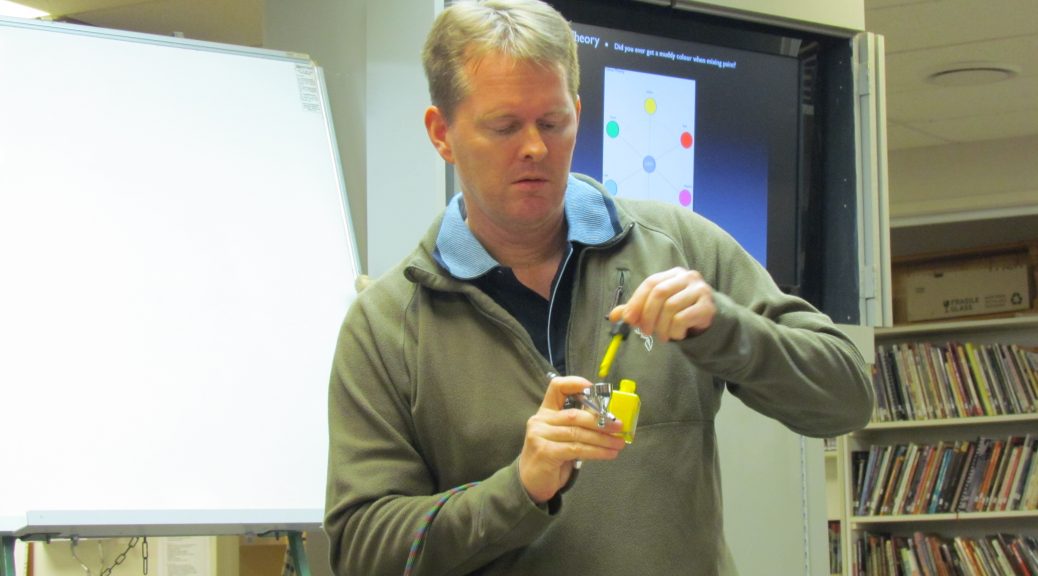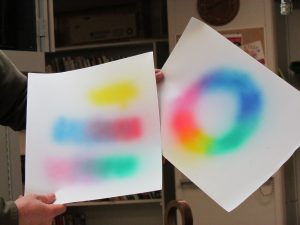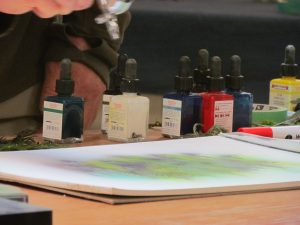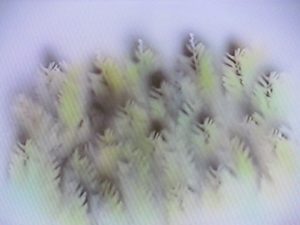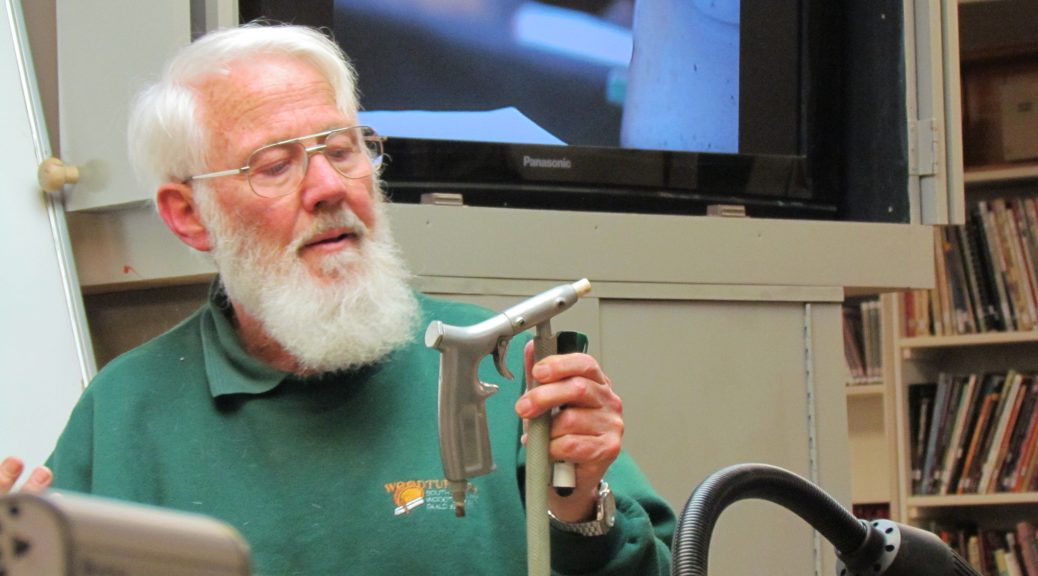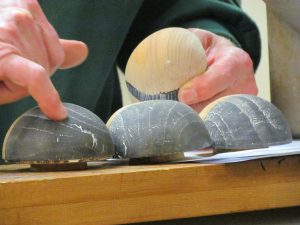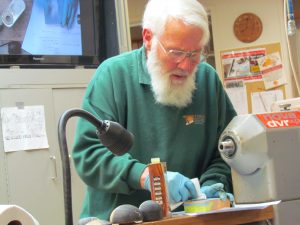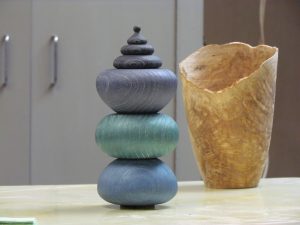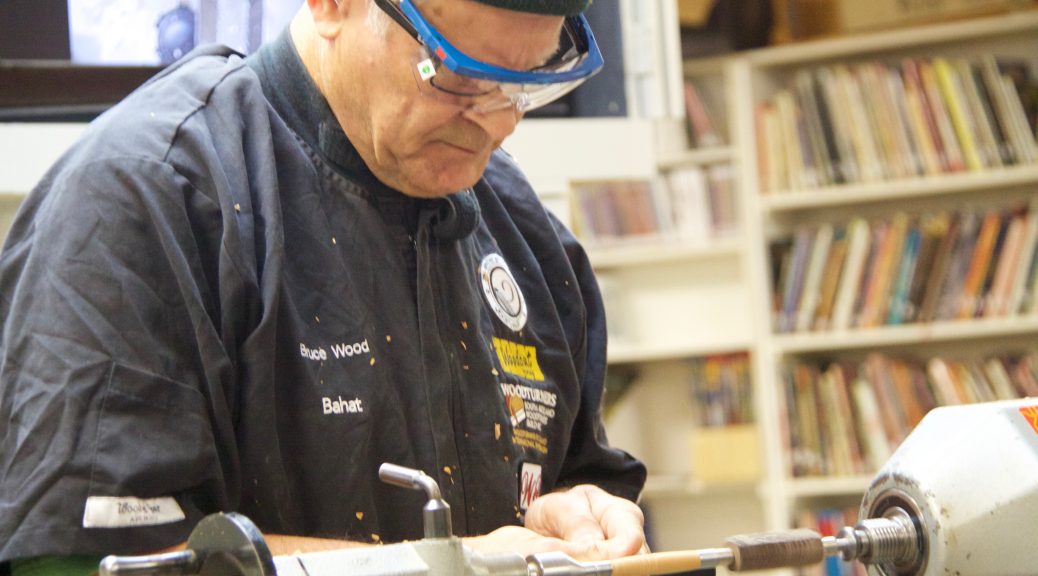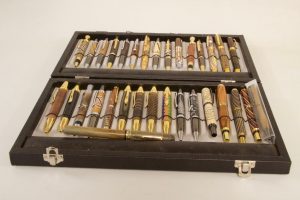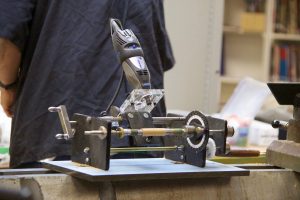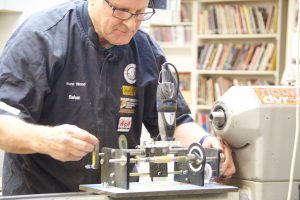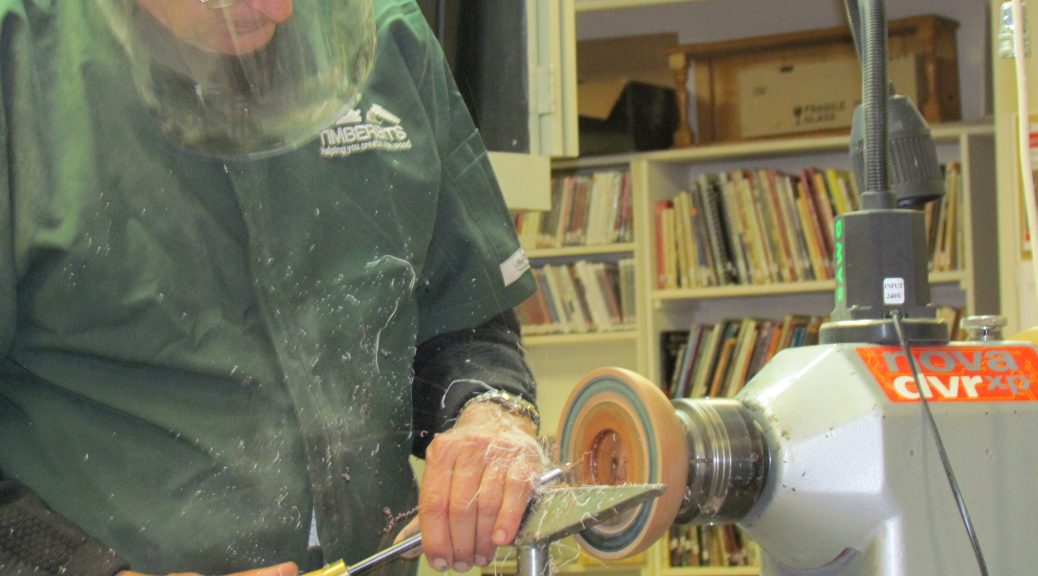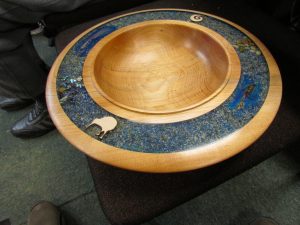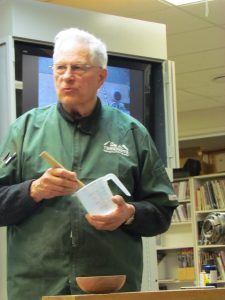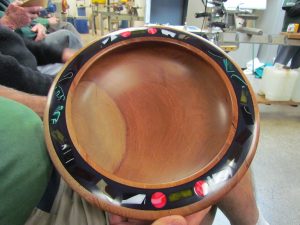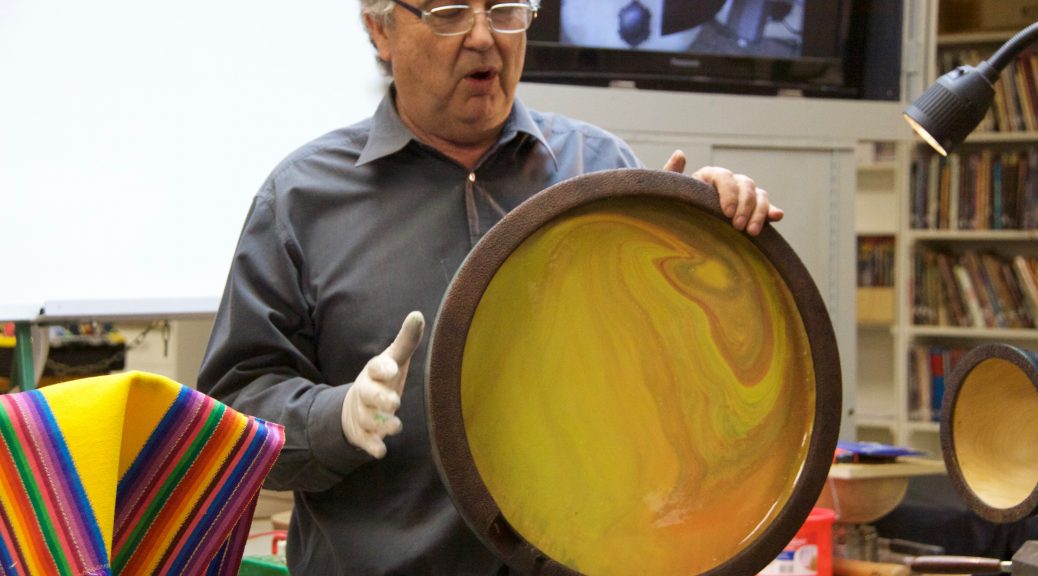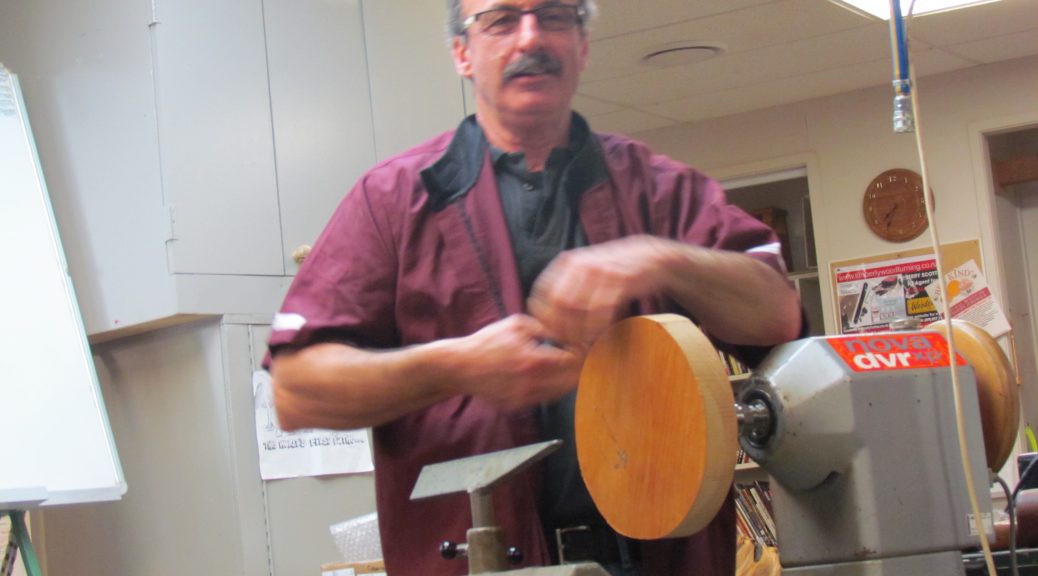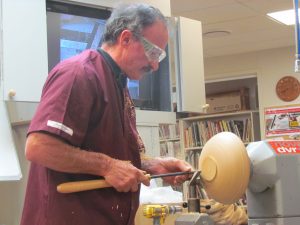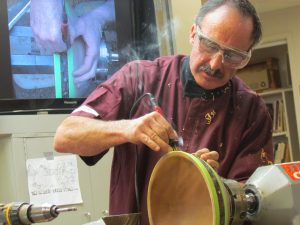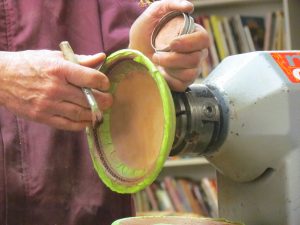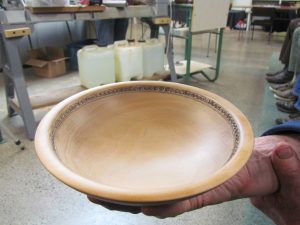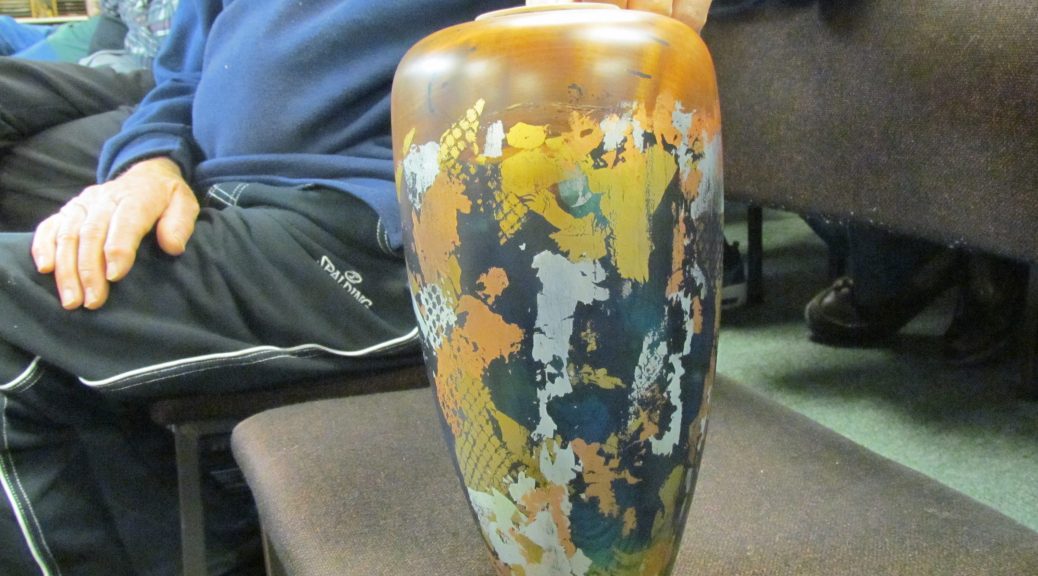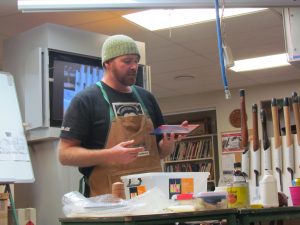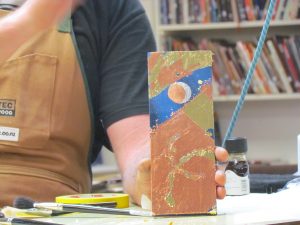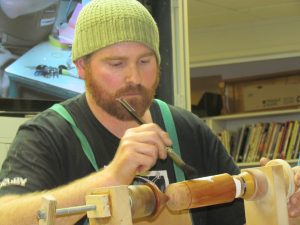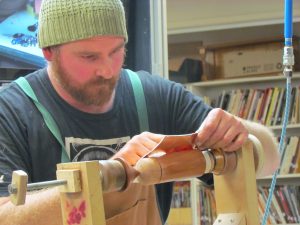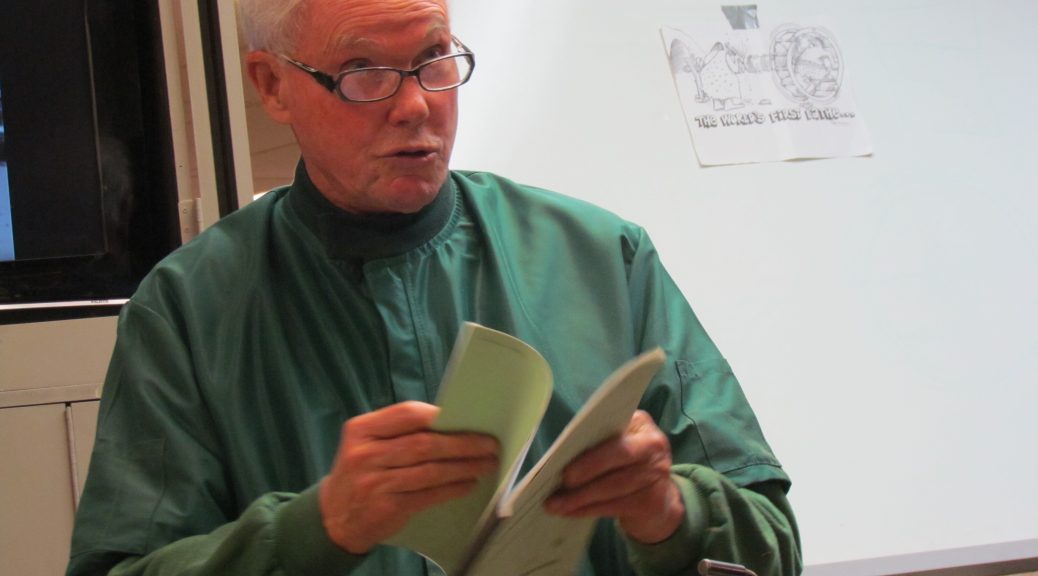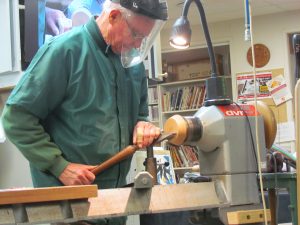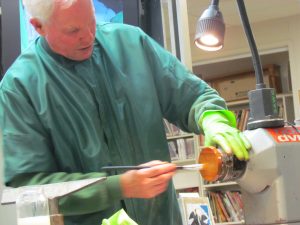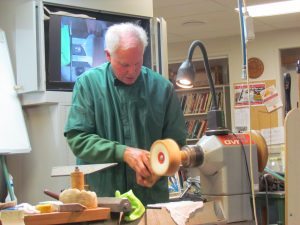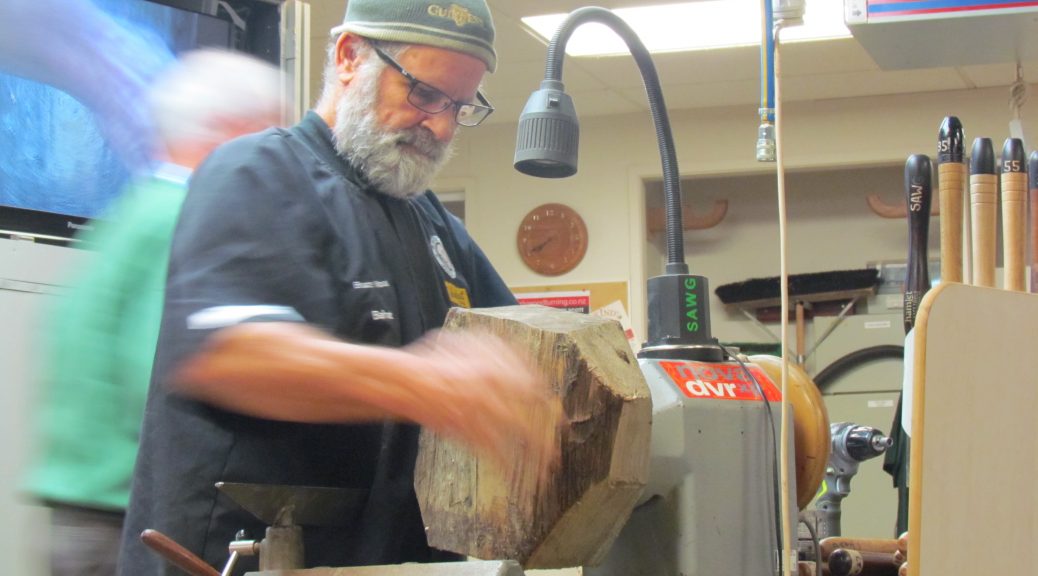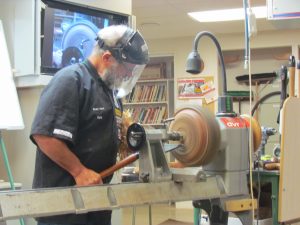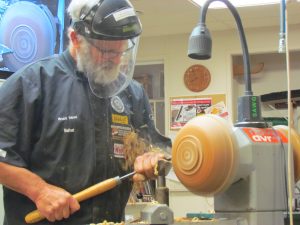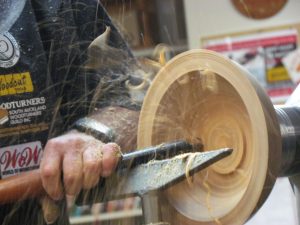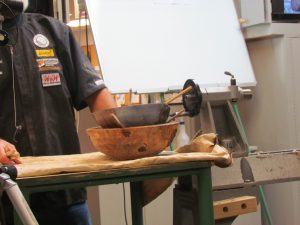Club Meeting: 17 Aug 2016
Report by: Murray Wilton
The trestle table behind the demo lathe was groaning …. not with food, but with an impressive array of turning props: completed and half-finished bowls, various chemicals, cleaning fluids, paints, sprays and dyes, J-cloths, a pyrography set, texturing tools, crackling paint. You name it, it was there. But all would soon be revealed.
Saving Old Timber
Warwick opened his demo by urging us not to throw out old timber, turned pieces with splits and gouges, even mouldy pieces retrieved from under the house or won in the raffles. Almost everything can be resurrected with a little elbow grease, cleaning chemicals and Kiwi know-how. Old wood that looks fit only for the fire can be brought back to life with “Exit Mould”, “Wet ‘N Forget” or Oil of Cloves. Any of these will remove gunge caused by age and neglect, but go easy on the Exit Mould as it can bleach the timber. A voice from the crowd suggested using the microwave to dry out old timber, but beware of fire and the fury of the person in charge of the kitchen.
Spalting is when a piece of timber has hard and soft areas in the grain, especially when some part of the timber is starting to rot. This can be dealt with by spraying the affected areas with a wood hardener (available from Mitre 10 and Bunnings).
Worm holes, cracks etc in old wood (including raffle wood) don’t mean you need to put it on the fire. Dig out affected areas with a Dremel, fill with Starbond glue or epoxy resin, either coloured with powder stain or left natural. Apart from using otherwise perfectly good timber, the aim here is to accentuate the flaw as a contrast, rather than attempting to cover it up which seldom works well.
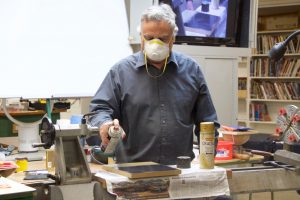
Warwick proceeded to demonstrate a variety of methods for enhancing and embellishing wood turning projects:
1. Use colour around the inside rim of a bowl to provide a contrast and to survive if the bowl timber deteriorates through use, water or too much sunlight.
2. Timbers such as the beautiful purple heart can sometimes be overpowering on their own. Pyrographic enhancement with dark stain on the outer rim of bowls can add interest and contrast.
3. Experiment with resin inlays around the rim of bowls and platters. Apart from the usual insertion of various trinkets (shells, paua chips, jewels, etc), try adding dyes to increase the contrast. Powder dyes, and various semi-precious stones can be bought on-line and used to fill holes and flaws. Fix with Starbond.
4. WARWICK’S TIP No. 1: go to the Two Dollar Shop and buy packets of very cheap artist’s brushes. Rather than laboriously cleaning more expensive brushes, just throw them away after use (and add your carbon footprint to global warming).
5. Flocking can be used to enhance the interior of small bowls and boxes. Flocking kits are available from Terry, Carbatec, or other on-line sites. They come in a range of colours and with an inexpensive flocking pump. Paint the flock glue onto the area to be flocked (after suitable
masking), then simply spray the flock onto it.
WARWICK’S TIP No. 2: Wear a mask. Flock isn’t good for the lungs.
6. Crackle Finishes can also be used for contrast and for covering up flaws. Paint on the crackle base paint (available in various colours in a 2-pot kit from Mitre 10 and Resene), allow to dry then finish with the crackle spray (“Plastikote”) which creates the crackle finish.
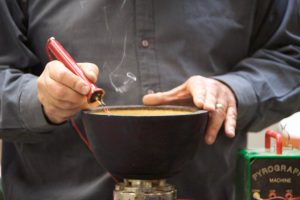
7. Pyrography can be effected on various parts of wood-turning projects. Created patterns of small dots or “waves”. Always complete the job in one session because interruption can change the pattern.
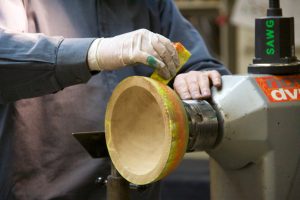
8. Colouring Effects Get a colour wheel from craft shops to ensure any mixtures you make produce the colour you want and avoid incompatible mixes. Wood dyes are available from craft shops (including Spotlight where you can earn Brownie points by taking your significant other on a trip to search the vast range of materials and sewing things). Look for U-Beaut non-toxic water-based dyes. Use kitchen Mystic Mits (plastic steel wool) to polish between separate colour layers.
Gilders paste can be used to finish pyrography work and give a leather effect to the patterns you have created. Finish with sanding sealer or various solvents.
Other colours can be applied using tubes of acrylic paint available from Spotlight (while your better half spends up big in the curtain department).
Inspired by a trip to Mexico, Warwick experimented with a mixture of loud colours added to resin to create a swirling effect on the inside bottom of a platter.
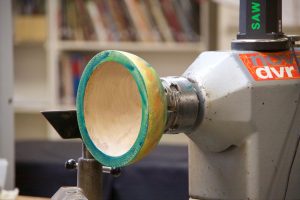
9. WARWICK’S TIP No. 3: Use protective clothing and rubber gloves when doing colour work.
10. Texturing Tools: When using these tools set the lathe to about 800 rpm and apply firm pressure to the area being enhanced. Apply a light sanding sealer coat to seal the exposed fibres. Mask off the area. Mix Spotlight colours or dyes and apply using a sponge, daubing it onto the bowl or platter in colour bands.
Many thanks to Warwick for providing us with such a wide variety of methods for salvaging and enhancing our projects.
